Shipyard named after 61 communard. Prehistory
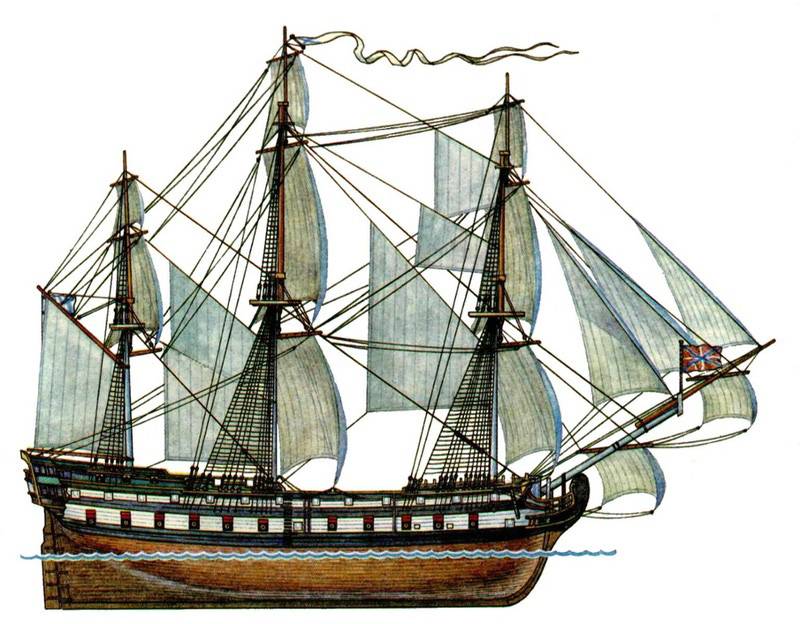
The closest aide to Prince Potemkin, Colonel Mikhail Leontyevich Faleyev, was entrusted to resolve the conflict, deal with the border incident and negotiate with the Turkish authorities. Along the way, Faleev had to solve one more task: to inspect the mouth of the Ingul River for the possibility of equipping a new shipyard there. In order of importance, this task exceeded the procedure with restless neighbors, whose hostility constantly grew.
It was difficult to satisfy Fabre’s request because the war began soon, where controversial issues were settled by sharper and harder means than “constructive dialogue”. But the inspection of the mouth of the Ingul turned out to be quite successful - a place for the construction of the sheds was found. Soon there will be a new shipyard, and with it - the city of Nikolaev. From this moment begins story Shipyard named after 61-th Communard, one of the oldest Russian shipyards on the Black Sea.
Finding a Wildfield
Field Marshal Grigori Aleksandrovich Potemkin was not in vain about the new shipyard - there was a war with the Turks, and the Russian naval forces on the Black Sea had a limited composition and an even more limited shipbuilding base. Long and difficult was the path of Russia to these southern frontiers. Unsuccessful Prut campaign 1711, crossed the success of the campaign of Azov. The Belgrade peace treaty that ended the Russian-Turkish war of 1735 – 1739. generally forbade Russia to have some kind of naval forces in both the Azov and the Black seas.
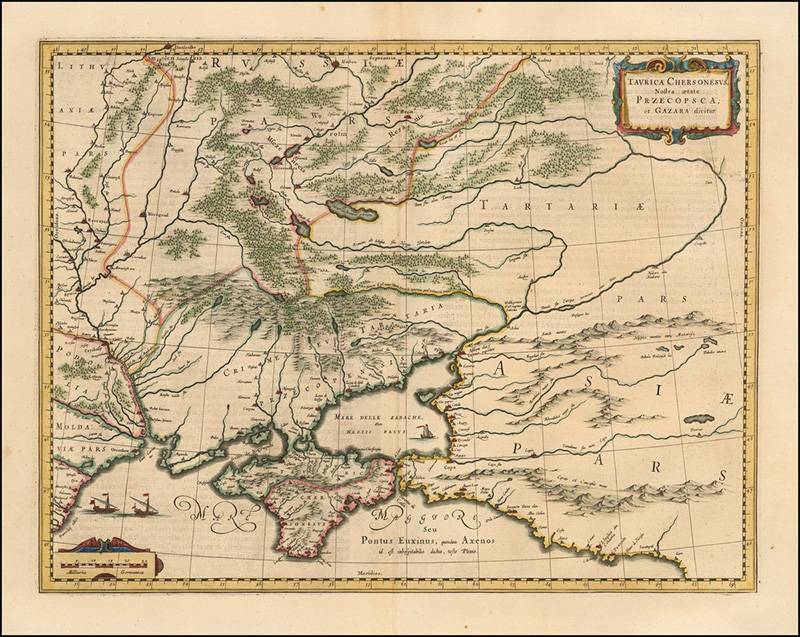
As a result, when the next war with the Ottoman Empire began in 1768, in order to at least somehow resist the enemy who dominated the sea, they had to go for improvisation. Old and long-abandoned shipyards in Novopalovsk, Tavrov, Khopra and other places were put in order and launched. They began to build flat-bottomed pram and small-sitting "newly invented ships" - a step forced due to the insufficient depth of the Don.
All this set of decisions led to the formation of the Azov military flotillastill unable to replace a full-fledged fleet. The ships that were part of it, despite the excellent firepower, had a number of design flaws (modest indicators of seaworthiness and speed) caused by forced restrictions during construction.
Russia needed a new shipyard, which could provide for the construction of ships of all classes, and not just flat-bottomed pram and clumsy "newly invented ships". In 1778, the city of Kherson was founded in the framework of the development of the Northern Black Sea region on the Dnieper.
Back in 1774, the then commander of the Azov flotilla, Admiral Aleksey Naumovich Senyavin proposed to begin construction of military ship hulls on the Dnieper, and then lower them into the estuary, where they could be completed and equipped. According to the terms of the Kyuchuk-Kaynardzhi peace treaty, Russia received access to the Black Sea through the Dnieper-Bug estuary, which at that time was called Lyman. At the end of 1775, this plan received the highest approval, and 18 on June 1778 of the year Catherine II signed a decree establishing the fortress and shipyard. 19 October of the same year, there was already their tab.
The new city was named Kherson in honor of Chersonesus-Taurian. The construction of fortifications, warehouses and barracks of personnel began. The proximity of Kherson to the territory of a potential enemy caused some of its specifics when planning: the shipyard should have no less than fifteen slipways, which are very compact for the convenience of enclosing them with a line of fortifications. Construction was not easy, because the Admiralty Board demanded to build both a fortress, boathouses and ships.
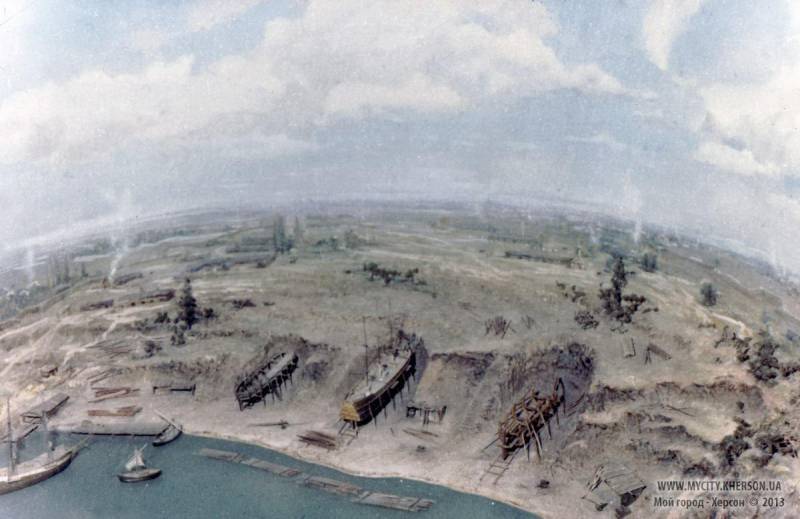
At that time, Russia simply did not have enough resources in this remote area. A systematic violation by contractors of the delivery dates of materials, a shortage of workers and qualified specialists - all this led to the fact that by the end of spring 1779, only one slipway was ready instead of the planned six first lines. It was on it that, on the orders of Potemkin 18 May, the first 60-gun battleship Saint Catherine was laid.
In 1780, two more slipways were completed, on which two 66-gun battleships were immediately laid. In the spring of the same year, the chief commander of the Kherson fortress, Lieutenant-General Ivan Abramovich Hannibal was summoned to the capital to clarify and adjust the original plans for the development of the Black Sea Fleet. Considering the realities, namely the acute personnel shortage and the problems of supplying the ship timber in the required quantities, the next highest decree regulating the development of shipbuilding in southern Russia was born.
In the coming years, it was planned to build twelve battleships and a proportional number of frigates and ships of smaller classes. At the same time, Lieutenant-General Hannibal gained greater freedom of action - the control of the Admiralty Board became less tangible. Allocations have been significantly increased. However, the construction of the city and the ships still went with great difficulty.
In the summer of 1782, when relations with the Ottoman Empire heated to a critical state due to the Crimean crisis, Catherine II demanded that the first 7 battleships be commissioned not in three years, as planned, but in the next year, 1783. This was an absolutely impossible task, since the previously laid ship "Glory to Catherine" was still in the shed, and most of the materials for the construction of other battleships rustled briskly with foliage and knocked bumps in Dnieper forests.
At the request of Hannibal, recruits from St. Petersburg and artisans from the Okhta shipyard were sent to him. Since the capital's shipyards were loaded with work, and there was no resource for free hands, it was decided to hire workers freely. By the end of 1782, the total number of workers at the Kherson shipyard reached almost two and a half thousand people, but less than two hundred of them were qualified personnel. Petersburg, poorly understanding the local border realities, demanded the earliest possible results - the tension in the relationship between Hannibal and the all-powerful Potemkin then increased.
In the meantime, significant political events have taken place. In April, 1783, the Crimean peninsula became part of the Russian Empire. Created in Kherson, the Black Sea Fleet was finally a great place to base - Akhtiar Bay. She was much preferable to the estuary, the long presence of large ships in which remained a controversial issue.
3 June 1783 was founded in the Akhtiar Bay port, which received the 10 February 1784 name Sevastopol. A government decree issued on this occasion pointed out the need for equipment in this city of admiralty and shipyard following the example of Kherson. However, this intention soon had to be abandoned - a simple calculation revealed the excessive cost of supplying everything necessary for shipbuilding to the Crimea, and first of all the forest.
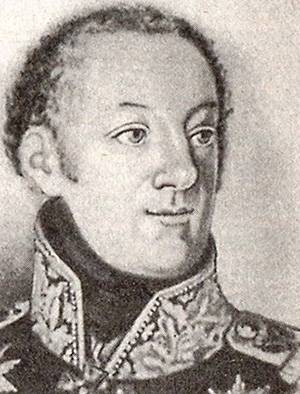
In April, 1783, Mr. Ivan Abramovich Hannibal was recalled to St. Petersburg, and Vice-Admiral Fedot Alekseevich Klokachev was appointed to replace him. He accepted affairs that were not in the most favorable condition. The fourth year, standing in the boathouse, the corpus of St. Catherine began to rot, and he needed to replace part of the skin. Of the six other battleships planned for construction, only four had a fully exposed hull set. Klokachev held a number of organizational measures designed to optimize the work of the slipping shipyard.
Soon, these efforts finally gave the first results. 16 September 1783, the 66-gun ship of the line "Slava Ekaterina" was launched, revealing a new chapter in the history of the Russian fleet on the Black Sea. The firstborn of the Kherson shipyards, “Saint Catherine”, was less fortunate. It was decided to abandon its completion because of the strong rottenness of the hull, the repair of which was considered unprofitable. The "St. Catherine" was dismantled, and in its place was laid 54-gun frigate "St. George".
At the beginning of the shipbuilding process in Kherson, a plague epidemic suddenly intervened. The disease was brought from Turkey to the Northern Black Sea region and gathered here a rich harvest. Only in Kherson, more than one and a half thousand people from among the servants of the Naval Department died. She did not spare Fedot Alekseevich Klokachev either. In his place was appointed Rear Admiral Yakov Filippovich Sukhotin. The work of the shipyard continued: following the "Glory of Catherine" in the summer of 1784, the second 66-gun battleship "St. Paul" was prepared for launching. In addition, everything was ready to arm and equip the "Glory of Catherine."
It is worth noting that the process of withdrawing ship hulls from Kherson to Lyman was a very complex engineering operation. For this purpose, special pontoons were used - camels, on which a ship without arms and equipment was carefully lowered downstream into the Estuary, to which there were about thirty miles. Only in the area of modern Stanislav, in a place called Deep Pier, camels descended for further equipment.
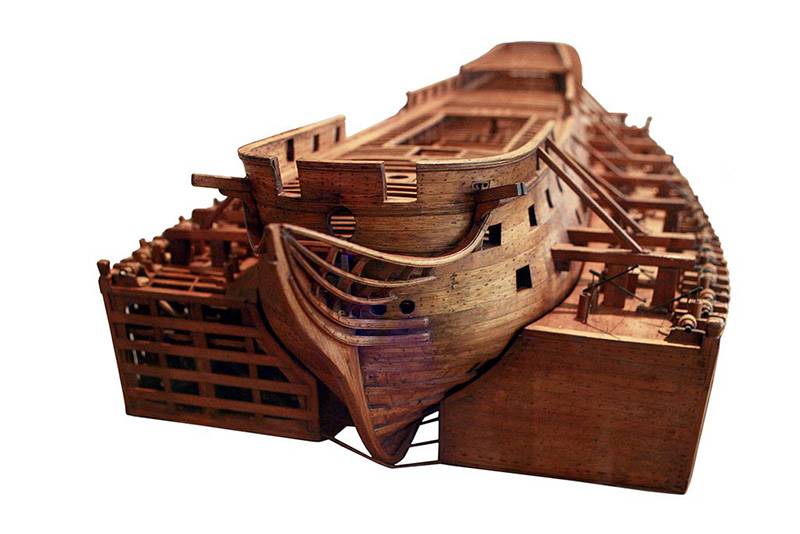
The appearance of "Glory of Catherine" within sight of the Ochakov fortress made a proper impression on the Turks. Obviously, it was not without reason that the Russians would not be able to build anything larger than galleys and other small things on the Dnieper. In August, 1784, the Glory of Catherine, which plunged ballast and artillery, departed for Sevastopol. The highest rescript from 13 August 1785, the new fleet states on the Black Sea were approved. The fleet was to have two 80-gun battleships and ten 66-gun guns. The frigates were supposed to be eight 50-guns, six 32-guns and the same 22-guns.
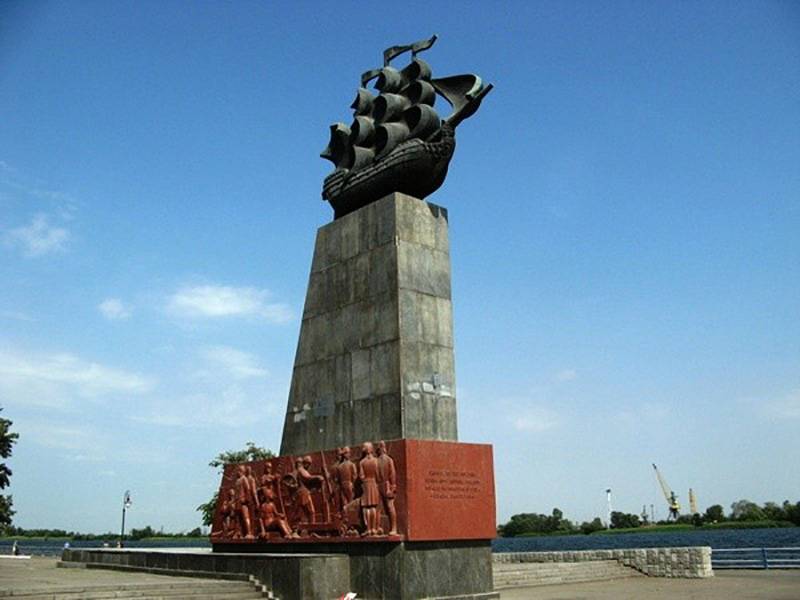
To manage all matters relating to the fleet and shipbuilding, a special body was established, and, moreover, independent of the Admiralty Board. It was called the Black Sea Admiralty Board, to which Taganrog and Azov now obeyed. The leadership of this entire imposing structure, of course, was confined to Prince Grigory Alexandrovich Potemkin. Yakov Filippovich Sukhotin, who was already vice-admiral by this time, a man of the old school, could not adapt to the changes and was recalled to the Baltic. His place was taken by the nominee of Potemkin himself, captain of the 1 rank Nikolai Semenovich Mordvinov.
The emergence of the Black Sea Admiralty rule, in fact self-contained structure, had a positive impact on the development of the Black Sea fleet. Independence from the Admiralty College made it possible to avoid various bureaucratic wires, aggravated by the same distance from the capital. At the same time, there was a favorable opportunity to distribute available and allocated resources according to one’s own needs and priorities. Thanks to the independence of the Black Sea Admiralty Board, it was possible without special difficulties to proceed to the design of ships that meet the specifics of the Black Sea, and move away from reproducing purely Baltic projects.
The problem of forest provision remained quite substantial. Unlike the capital and Arkhangelsk shipyards, which were supplied with timber from state-owned forest areas, private contractors were used on the Black Sea for this purpose, which often led to characteristic metamorphosis. Often a raw and wormy forest came to the shipyard, the cost of which, however, testified to its undoubted Canadian or Indian origin.
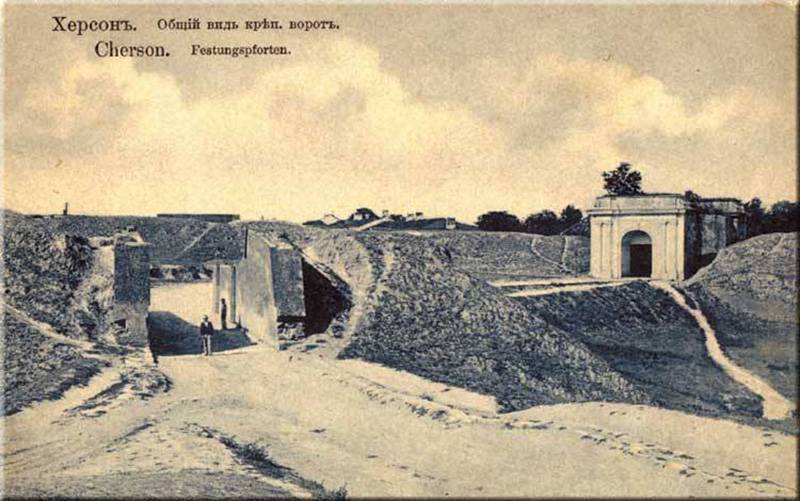
By the summer of 1787, when the foreign policy situation in Porto’s relations was rapidly losing any signs of good neighborliness, Kherson gave the Black Sea Fleet four 66 gun-gun ships (one of them, Saint Alexander, in 1786 crashed near Evpatoria during the transition to Sevastopol ) and two 54-gun frigates. In Kherson was on the completion of the 80-gun "Joseph II", and at the deep jetty was equipped 66-gun "Saint Vladimir" and 54-gun frigate "Saint Alexander".
Potemkin, despite the successful development of his offspring, clearly understood that the available production capacity was clearly not enough to create in a relatively short time a powerful fleet capable of fighting the Ottomans on an equal footing. The experience of building ships in Kherson revealed the significant shortcomings of this place as a shipyard: remoteness from the sea and the associated difficulties with the transportation of hulls. Around the city, the terrain was full of reeds and fluxes, which led to frequent outbreaks of various diseases. Shallow sand bars at the mouth of the Dnieper, which are constantly updated due to the powerful flow of the river. In addition to all of the above, in spring, part of Kherson and the shipyard were flooded with a powerful flood.
It was necessary to find a place that was more suitable in all respects for the foundation of a new shipyard.
The choice of the brightest
Potemkin drew attention to the deep river Southern Bug, devoid of many defects of the mouth of the Dnieper. However, the main drawback of the Bug was not in the hydrological, but in the political field. The river was at that time the border between Russia and the Ottoman Empire - according to the articles of the Kyuchuk-Kaynardzhi peace treaty.
In July, 1784 of the year in the border region decided to try agricultural and, if successful, commercial happiness, the capital of the Austrian-born merchant Franz Fabre. To the highest name, he filed a petition asking for allotment of land. It should be noted that the enterprising merchant already had a successful experience of hard petition science - a year earlier he similarly asked Potemkin to dissociate him from five hundred dessiatines of land in the place of the merger of the Bug and Ingul. Now Fabre hoped to expand his possessions by another thousand acres. The colonization of the northern Black Sea coast was a process supported at the state level, and the merchant's request was granted.
Having received in use virtually the entire Nikolaev peninsula, Fabre quite skillfully organized the economy. He founded three estates, in which there were mills, small walls, and at the place of the crossing over the Ingul, where the road from Kherson went to the north, was a guest house and taverns. For the land, Fabre paid a symbolic price - on 3 a penny per tithe. Thus, the territory of almost all modern Nikolaev cost the entrepreneur the sum of 45 rubles with kopecks.
Fabre’s commercial activity developed at a rapid pace with the most active assistance of the tavern when the Turks who lived across the river decided to pay a visit to the enterprising landowner. Since the subjects of the Turkish Sultan had their own understanding of the inviolability of state borders, the visit was sudden and painful. Fabre's estates were burned down, the maidservant was killed, the Turks safely left for their territory.
In the complaint filed in the name of Potemkin, the landlord asked me to clarify the situation. There was war on the nose, and the thoughts of the prince were busy with many worries and projects. The main one was the plan for the establishment of a new shipyard. Giving instructions to Colonel Faleyev to settle the situation, Potemkin held in his mind a much more important task: to inspect the landowner's possessions for their use by the state. Carrying out a reconnaissance on the ground, Faleev presented a report, in which he gave a positive assessment of the successful location.
However, there was one annoying detail. The lands on which the prince had strategic views turned out to be privately owned — he himself sold them to the victim of the Turks Franz Fabre several years ago. In the conditions of inevitable confrontation with Porto, Potemkin ordered to simply cancel the merchants of the Austrian merchant and redeem his possessions in the treasury. 2 September 1787, the Yekaterinoslav governorship ordered to withdraw to the treasury the lands previously transferred to Fabre.
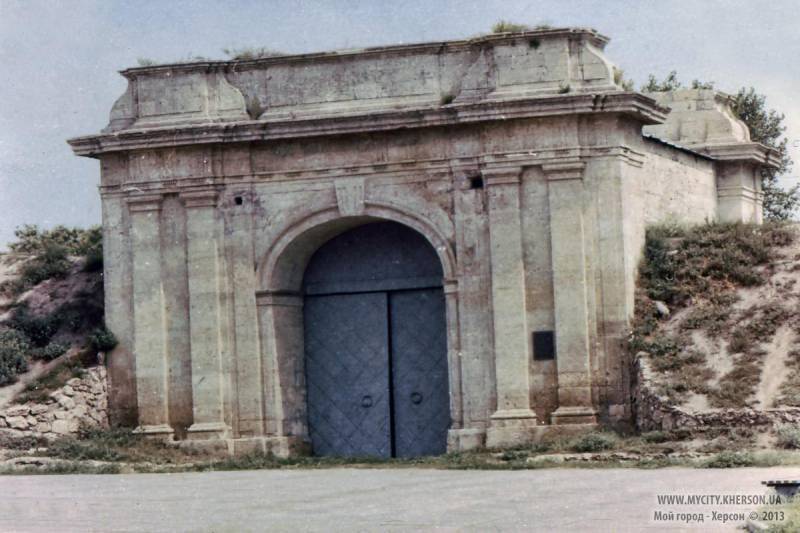
The matter remained small - in relative proximity to the planned shipyard stood the largest Turkish fortress Ochak-Kale in the Northern Pontic. Only with the elimination of this danger, there was an opportunity for the smooth foundation of the city and the shipyard.
To be continued ...
Information